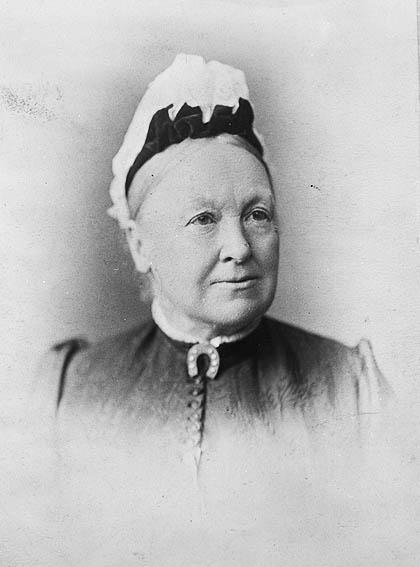As speculation builds on the timing of the next Federal election, according to trusted psephologist Anthony Green the last date for a normal house and half-Senate election is 21 May 2022. This allows six-weeks to complete the complex Senate count so Senators can start their terms on 1 July 2022. Half of each States’ 12 Senators and the 4 Territory Senators will be up for election. This rotating system was embedded in the Constitution to provide the Senate with a continuing, rotating membership as a House of Review. Since 1948, election to the Senate is through vote-counting known as proportional representation.
Proportional representation in Australia is one source to find inspiration from Catherine Helen Spence, mourned as ‘The Grand Old Woman of Australia’ when she died in 1910. Writer, preacher, reformer and feminist, she advocated for electoral reform after reading J. S. Mill’s review of Thomas Hare’s system of proportional representation and in 1859 wrote, printed and distributed A Plea for Pure Democracy. She visited Thomas Hare in Britain and by 1892 she propounded a modified Hare-Spence system to achieve proportionate representation of political parties.
I was first inspired by Spence as an early career academic when running for election to participate in the Howard government’s popularly elected section of the Constitutional Convention of 1998, which mirrored the popularly elected Constitutional Conventions of the 1890s. Motivated to activate my research and public policy passions in the public sphere, I knew that Spence herself ran to be a member of the Constitutional Convention of the 1897 Constitutional Convention held in her hometown of Adelaide, the first woman in Australia to run for public office. Spence refused to be included on a party-political ticket. Her decision to run as an independent, as well as dirty dealings by male opponents, cost her a seat at the table.

Portrait of Catherine Helen Spence in the 1890s. Picture: Public domain/Wikimedia Commons
While not a drafter of our Constitution, her contributions and inspiration continued. When introducing proportional representation for Senate elections in 1948 Attorney-General Dr H.V. Evatt said ‘the fairest system and the one most likely to enhance the status of the Senate is that of proportional representation.’ Here Evatt was repeating Spence’s advocacy from the 1860s seeking to widen the pool of parliamentary representatives able to determine and review laws and political agendas. By making the Senate more representative, proportional representation has contributed to the Senate’s authority, enhancing its ability to fulfill its role as a House of Review, reviewing government legislation and also providing oversight and accountability for the way it administers legislation through the Senate Committee system, including through Senate estimates.
Since the first proportional representation Senate election in 1949, the norm is that the elected government has been without a majority in the Senate. Since Territory representation in 1975 was introduced only the Fraser government of 1975-1981 and the Howard Government of 2005-2008 achieved the rare feat of having a majority of their party in the Senate. This norm is the most likely result in the next Federal election. No matter who wins government it is almost impossible for that party to achieve a majority in the Senate. Any legislation a future government proposes and passes in the House, must also pass a majority in the Senate. It is here where the next cross bench will be crucial to the future of Australian policies and the quality of our democracy moving forward.
Much attention is rightfully being placed on the election of Independents in the lower house. But the outcome of Helen Haines and Zali Steggall’s re-election, and the success of other Independents seeking election in growing numbers in the House is but half of the formula. Strong Independents of integrity will be needed in the Senate to exercise the balance of power and ensure action on the pressing issues of our time including climate action and women’s safety to name just two.
Catherine Helen Spence’s advocacy for the democratic value of political minorities and Independents is vital to the nation Australia has become since Federation and the many issues that must be addressed in a post COVID world. As Spence’s entry in the Australian Dictionary of Biography acknowledges, she became a symbol of what Australian women could attempt. She is an inspiration to what all Australians should expect in their representatives — integrity and a commitment to the best form of politics to ensure Parliament truly represents the people of Australia in the 21st Century. Australian citizens on the electoral roll have the opportunity and responsibility to be inspired too when they cast their vote at the next Federal election, whenever it is called.
The post Catherine Helen Spence: My inspiration from the past appeared first on BroadAgenda.
This post was originally published on BroadAgenda.